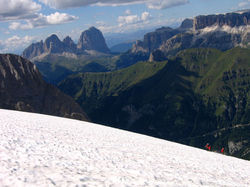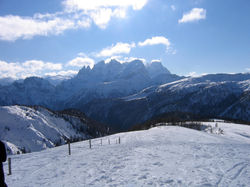 |  |  |  |
|---|---|---|---|
 |  |  |  |
 |  |  |  |
 |  |  |  |
 |  |  |  |
 |  |  |  |
 |  |  |  |
 |  |  |  |
 |  |  |  |
 |  |  |  |
 |  |  |  |
 |  |  |
DOLOMITI
The genesis of these mountains begins through accumulations of shells, corals and calcareous algae in the marine and tropical environment about 250 million years ago. At the bottom of these seas hundreds of meters of sediment accumulated and turned into rock. Subsequently, the clash between the European plate and the African plate brought out these rocks raising them over 3000 m above sea level and creating what we can see today as one of the most beautiful places in the world. The peculiarity of the Dolomites lies in their usability, often excessive, due to the roads that reach over 2000mt, to the cable cars and to an endless network of paths that together with the Via Ferrate in the summer allow you to reach many corners of these wonderful mountains. In winter a network of 1200 km of ski slopes served by ski lifts allows you to observe them from many different points, but fortunately not all ......